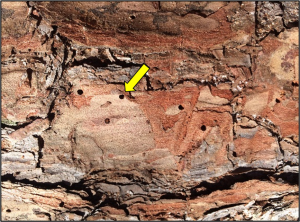
Elizabeth Benton and Kamal Gandhi, D.B., Warnell School of Forestry and Natural Resources, University of Georgia
Rainfalls levels were below normal in Georgia during most of 2016, and much of northern Georgia is still experiencing severe to extreme drought conditions. While these areas have received rainfall, drought conditions are still predicted through May 2017 in northern Georgia. Agriculture, wildlife, and water quality resources have been negatively affect by the drought.
Forests, especially in the Piedmont and mountain regions, are showing the drought effects, with over 200 Ips engraver infestations being reported in excess of five acres. Many infestations have been 25 to 50 acres in size. Pines are dying even in areas of the state that are not currently in official drought conditions, and the question is, “Why is this happening?”
Drought stresses and weakens trees, making them more likely to be attacked by bark beetles. Under drought, trees do not receive enough water to perform their normal life processes, like converting sunlight to energy. Tree drought responses include leaf wilting, early leaf fall, dying tissue, shutting down roots, and changing chemical process within the tree. Many of these changes occur to conserve water and keep the tree from dying. Even as rainfall conditions return to normal, trees require time to fully recover from their drought response. So there can be a time-lag between increased rainfall and full tree health recovery. Unfortunately, this time-lag and milder winter temperatures gives bark beetles more time to attack pine trees.

Pine trees growing in higher and drier locations are most likely to experience bark beetle infestations and ultimately tree death. However, drought stressed pine trees are susceptible to bark beetle attacks. Once a few trees start dying, the number of infested trees may continue to grow within a forest or neighborhood. There are multiple signs bark beetle attack, including branch dieback (or flagging), changes in needle color (green to yellow to brown), and eventually tree death with needles falling from branches. Other signs that directly indicate bark beetle activity, include small (1-2 mm) round exit/entrance beetle holes on the bark (Image 2). Sometimes sticky pine pitch will surround the hole, but this symptom is mostly absent on drought-stressed trees.
Gently peel bark to expose inside of the bark and outer wood. Galleries etched by pine engraver beetles (Ips species) (Image 3) will be visible on the inner bark (Images 4 and 5). Southern pine beetle also may be present in the same tree, but the main culprits in recent pine death are the engraver beetles, especially Ips avulsus. These beetles are usually not a major problem, only attacking a few stressed trees in the forest. However, since many trees are drought-stressed, engraver beetles are taking advantage of the increased easy food supply. In addition, warmer winter conditions have allowed them to continue to be active during the dormant season. The Georgia Forestry Commission has identified over 1,000 forested acres where engraver beetles are killing pine trees.


Dead and dying pine trees in forests can be harvested to recover economic value from timber stands. Dead pines in lawns will need to be removed, as dead trees can be hazardous to life and property. It is important to contact certified arborist professionals for tree removal, and confirm that these tree removal specialist are insured. If you have pine trees that are dead and dying with fading crowns, please contact your local county extension agent or the Georgia Forestry Commission for assistance.